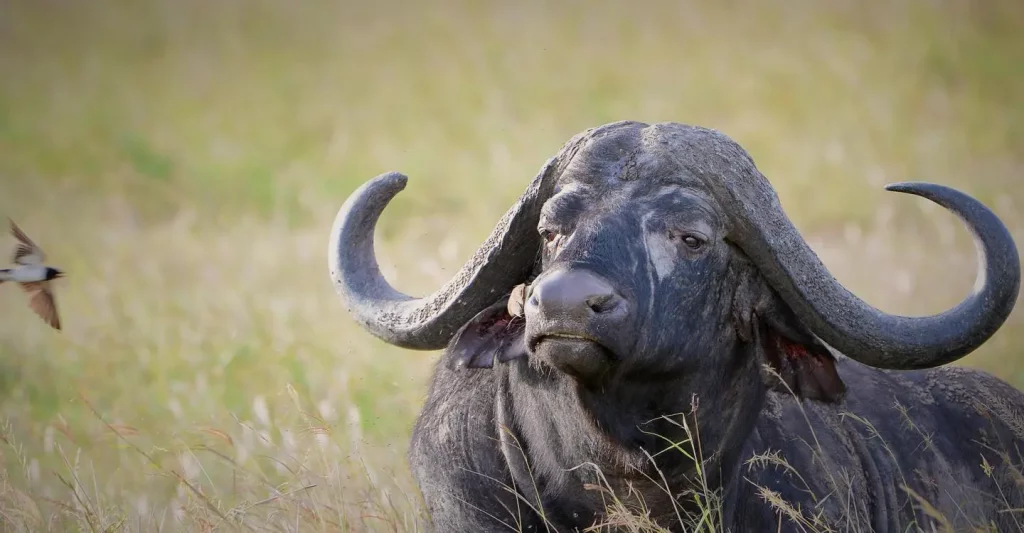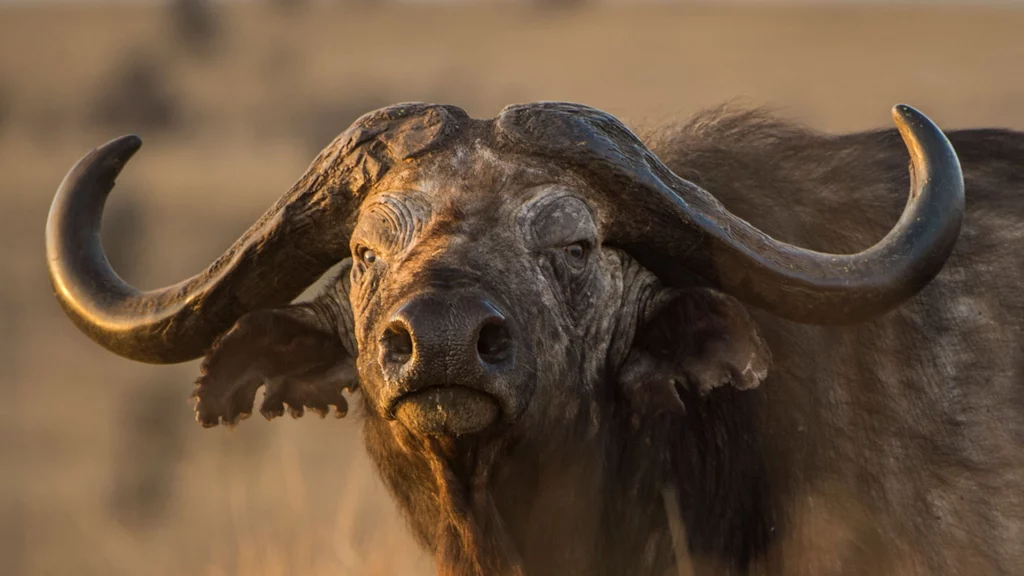African Buffalo: Facts, Size, Lifespan, Diet, and Habitats
African Buffalo: Facts, Size, Lifespan, Diet, and Habitats. What is a buffalo? There are only one species of buffalo in Africa but four distinct subspecies exist forest buffalo, West African savanna buffalo, Central African buffalo, and southern savanna buffalo (also known as the Cape buffalo).

The African Buffalo
Savanna buffaloes are huge, hefty creatures that resemble cows. They differ widely in terms of color, horn shape, and size in addition to size. The young are frequently reddish-brown, whereas adults are typically dark gray or black (or may even appear red or white if they have been wallowing in that hue of muck). Although many savanna buffaloes in western Uganda are also red or pale orange rather than black, the smaller forest buffalo retains its red hue even as an adult. As people become older, they lose hair.
The horns of both sexes are thick, ridged, and either grow straight from the skull or curve downward and up. When competing for space among the herd and engaging in conflicts for dominance, males use their horns, which are powerful weapons against predators.
African Buffalo Facts
African Buffalo facts: the CAPE BUFFALO facts | Animal Fact Files
SCIENTIFIC NAME: SYNCERUS CAFFER
LIFE SPAN: 11 TO 22 YEARS IN THE WILD
GESTATION: 11 TO 12 MONTHS
WEIGHT: ABOUT 300 TO 835 KILOGRAMS (660 TO 1,840 POUNDS)
HABITAT: DENSE FOREST TO OPEN PLAINS
PREDATORS: HUMANS, LIONS, LEOPARDS, HYENAS, AFRICAN WILD DOGS
SIZE: ABOUT 1 TO 2 METERS TALL (4 TO 5 FEET)
DIET: HERBIVOROUS
ESTIMATED GLOBAL POPULATION: 900,000
Challenges faced by African Buffalos
- African buffaloes frequently come into conflict with humans: Due to their size, aggression, and intimidating horns, these giants are viewed as dangerous animals outside of national parks and are regarded as crop pests. They are known to destroy fences, raid cultivated crops, and possibly even infect animals with bovine illnesses in East Africa. In the past, the big rinderpest outbreak in the 1890s caused them to experience their most severe population fall. Combined with pleuro-pneumonia, this resulted in up to 95% of livestock and wild buffalo deaths.
- Habitat fragmentation threatens the African buffalo: Fragmentation, which occurs when land is fragmented by unsustainable development, poses a threat to the environment.
Behaviors of African Buffalo
- Buffalo sometimes congregates by the thousands: Although they have been observed gathering in the thousands in the Serengeti during the rainy season, they can live in herds of a few hundred. They have several anti-predator adaptations, one of which is congregating in sizable herds. Large herds reduce the likelihood that lions will single out any particular person. The majority of the herd is made up of females and their young. Males may spend a lot of time in groups of bachelors. There are two different kinds of these groups: those with guys aged 4 to 7 and those with males aged 12 and up. The elder bulls frequently favor solitude.
- Births typically occur during the rainy season: At age four or five, females give birth to their first calf. They typically only have calves every two years, and the majority of those births take place near the conclusion of the rainy season when there is an abundance of grass, which increases the nutrition of females throughout pregnancy and lactation. The link between the female and her progeny is unusually close and long-lasting. Males do not make investments in their progeny. Calves nurse for up to a year and are entirely dependent on their moms throughout this time. Male young depart the natal herd around the age of four, but female young typically remain there.
- Buffalo’s senses are quite poor: African buffaloes have very weak hearing and sight, but a highly developed sense of smell. Additionally, they appear to have trouble controlling their body temperature, which is why they eat mainly at night. The animals do communicate, despite the fact that they are often quiet. They grunt and produce gruff bellows during mating seasons, and when a calf is in danger, the herd will run at a gallop to protect it.
Diet: What do African Buffalos eat?
- Grass forms the bulk of the buffalo’s diet: Predation is less essential than food supplies in controlling population size. Buffaloes quickly degrade in the absence of fresh green forage. They spend a significant amount of time feeding and grazing. Like cows, they spend time chewing their cud (or bolus) after grazing on grass in order to get even more nutrients from their meal.
Habitats: Where do African buffalo live?
As long as they are near a water supply, they may live in a variety of habitats, from semi-arid bushland and montane grasslands to coastal savannas and lowland rainforests. They can be found in the northern, southern, and lowland rainforests of sub-Saharan Africa, as well as all throughout the savannas in between.


